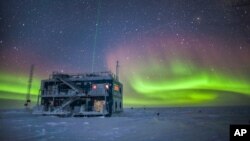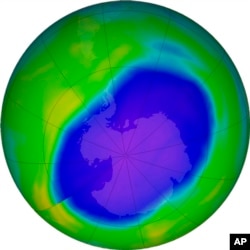A U.N.-led study released Monday shows a hole in the protective layer of ozone over Antarctica is on track to fully recover in about four decades, thanks to the global phasing out of nearly 99% of banned ozone-depleting substances.
The report, published every four years, was presented Monday at the 103rd Annual Meeting of the American Meteorological Society in Denver.
The report indicates that if current policies remain in place, the ozone layer is expected to recover to 1980 values — before the appearance of the ozone hole — by around 2066 over the Antarctic, by 2045 over the Arctic and by 2040 for the rest of the world. It shows the Antarctic ozone hole has been slowly improving in area and depth since the year 2000.
The scientific assessment monitors the progress of the Montreal Protocol, a global agreement reached in 1987 and put into place in 1989, intended to protect the Earth’s ozone layer by phasing out the chemicals that deplete it, often used as propellants in household products or in air conditioning.
In a statement, U.N. Environmental Program Ozone Secretariat Meg Seki said the ozone recovery data in this latest study is “fantastic news.”
“The impact the Montreal Protocol has had on climate change mitigation cannot be overstressed,” she said, calling the treaty “a true champion for the environment.”
The latest assessment has been made based on extensive studies, research and data compiled by experts from the U.N. World Meteorological Organization; the U.N. Environment Program; the National Oceanic and Atmospheric Administration; the U.S. space agency, NASA; and the European Commission.










